In the Race to Repeatability, Okuma Takes the Lead
04.17.2025
Plus, four other reasons Richard Childress Racing chooses Okuma over other machine tool OEMs for every contract manufacturing job.
Story at a Glance
Richard Childress Racing (RCR) won NASCAR trophies and manufactured motorsports parts with Okuma machine tools
Then, as the manufacturing industry experienced a significant shift in the late 2010s, RCR decided to pivot from racing and expand into contract manufacturing
This company growth and ongoing success are results of the diverse machining capabilities, advanced technologies, and loyal partnership Okuma provides
Welcome is a small North Carolina town with everlasting ties to Okuma and a big attraction. Daytona 500 big.
The epitome of motorsports and machining excellence, Richard Childress Racing (RCR) is one of NASCAR’s largest and most successful organizations. It’s a cultural centerpiece in a modest North Carolina hamlet, with its museum drawing tourists and racing enthusiasts from all over. And in recent years, after decades of manufacturing parts primarily for racing and engines, RCR and its ancillary company — Richard Childress Racing Manufacturing Solutions (RCRMS) — are important names to know if you’re in the market for complex, high-precision metal parts — regardless of industry.
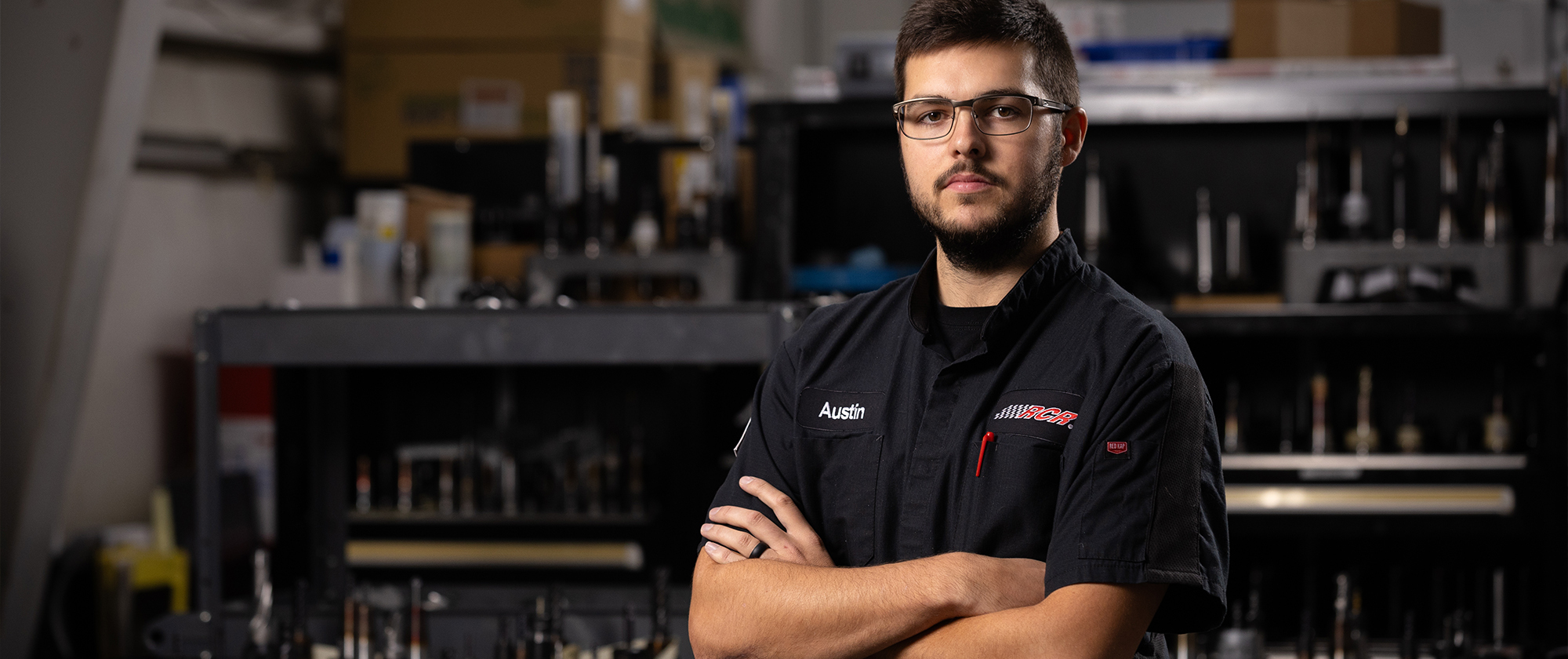
A PEEK UNDER THE HOOD OF HIGH PERFORMANCE
In its always-busy, always-booming 56-year history, the organization has seen numerous crowns and accolades: 200+ NASCAR victories include three Daytona 500 wins and six Cup Series Owner Championships.1 But, just as important are RCR’s off-track victories. As RCR moved from humble beginnings to hoisting trophies, and as its drivers multiplied the team’s achievements each year, RCR engineers, mechanics, and machinists worked for the same success in parallel.
And they still do. From the single-car shop where it all started to the expansive 15-building campus home to RCR and RCRMS today and many Okuma machine tools, these specialists maintain everything from coveted race cars to military trucks and fulfill complex manufacturing orders at a component level. Prototyping, fine-tuning, maintaining, repairing, perfecting parts — the companies’ dedicated staff do everything to keep cars fast and their contract manufacturing business robust.
Unmatched prowess in, preparation for, and precision of their manufacturing work — aspects that keep moving forward at a first-place pace — paid off, particularly in 2021 when NASCAR released the Next-Gen car model. Competing with other manufacturing enterprises, RCR won the bid to make the cars’ new single lug nut. A drastic difference from the traditional five-lug hub, this sophisticated project required experts.2 Four years later, RCR still makes the part to exact specifications, always keeps at least 150 single lug nuts in stock, and helps the wheels on NASCAR’s redesigned cars turn with tenacity and tight tolerances. This was an inflection point, one where RCR expanded its offerings and, for the first time, manufactured a component that all NASCAR Cup Series teams would have on their cars come race day. But now, that’s only a small part of their business.
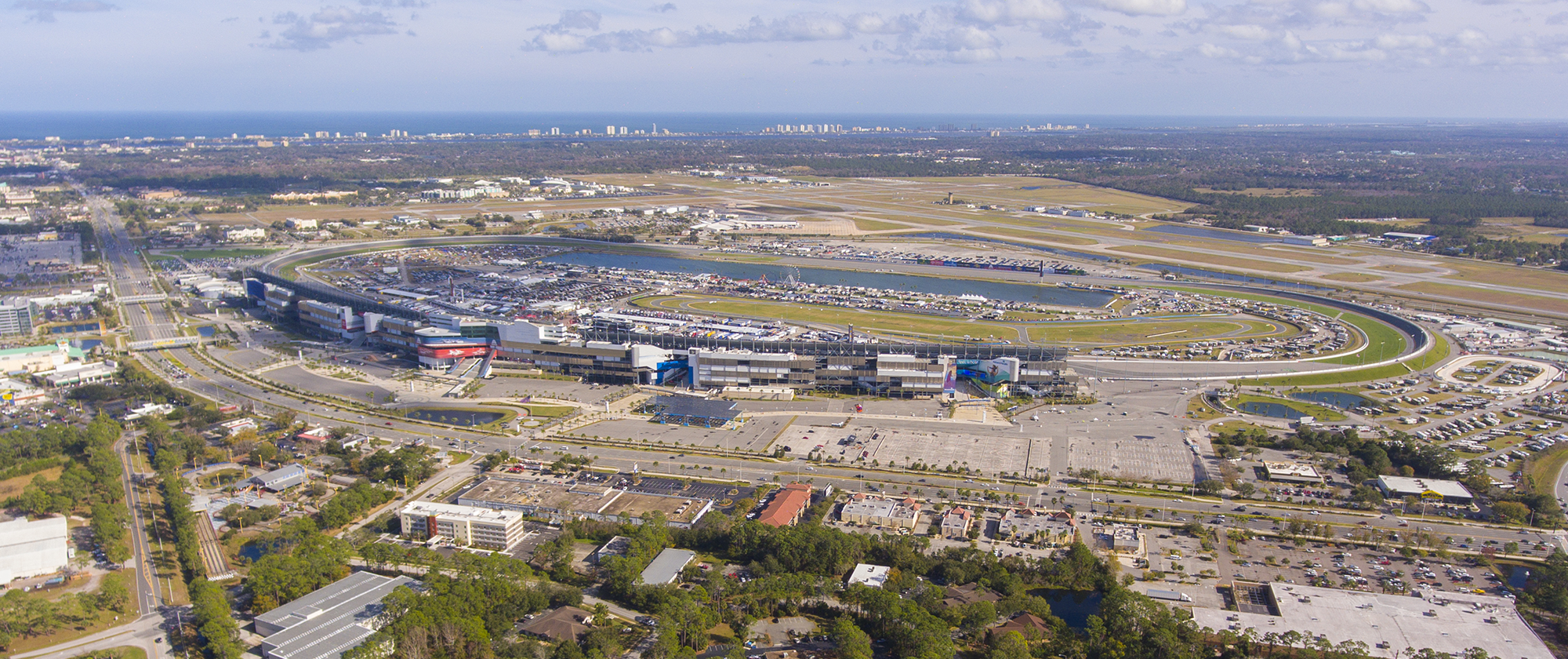
How does RCR keep winning? How is a small-town shop selected for big contracts, and how does their machining team deliver with flawless execution? How does RCR evolve as manufacturing does?
The answers lie in a quarter-of-a-century, limits-pushing partnership between Richard Childress Racing and Okuma.
FROM SHOP TO SPEEDWAY
Stepping into the Richard Childress Racing Manufacturing Solutions shop is like stepping into an Okuma showroom. Never still, with spindles purring like engines, Okuma lathes, machining centers, and multitasking machines stretch from wall to wall. There are 18 in total. Some are brand new, some are used to manufacture NASCAR’s single lug nut, two are from the partnership’s origin, and all are used — and trusted — to meet every strict deadline.
Initially, RCR purchased a handful of Okumas to produce a fifty-fifty split of engine parts and car components. The reasons for an investment in Okuma were simple.
“As the racing business became more competitive, we looked at every angle to find an advantage. We brought a lot of our manufacturing in-house and needed to partner with the best in the business. That was clearly Okuma. From the first meeting over 25 years ago to today, Okuma has been a best-in-class partner. From their reliability to innovation, we can always count on Okuma’s experts and machines to help us solve any challenge.” – Richard Childress, Chairman and CEO, Richard Childress Racing
The success of their engines and cars created greater demand for similar parts, which created RCR’s need for additional machines. As business grew, especially with the contract for the single lug nut, so did the number of Okumas owned; round and round like laps on a track, RCR earned more contracts, and the Okuma machine tools produced standard-setting racing parts for customers near and far.
Then, business changed.
OPENING POSSIBILITIES AT FULL THROTTLE
Around the time RCR secured the bid for the single lug nut, market demand for customization, flexibility, and short lead times within the manufacturing industry increased exponentially. Low-volume, high-mix, tight-tolerance production became necessary as industries — medical, defense, aerospace — started to innovate like they never had before.
A legacy-altering decision needed to be made: continue the exclusive manufacturing of racing parts or lean into new opportunities in new industries? With the leading reliability, unfaltering precision, and diverse capabilities that Okuma’s machine tools and steadfast partnership provide, RCRMS transformed into a contract manufacturing powerhouse.
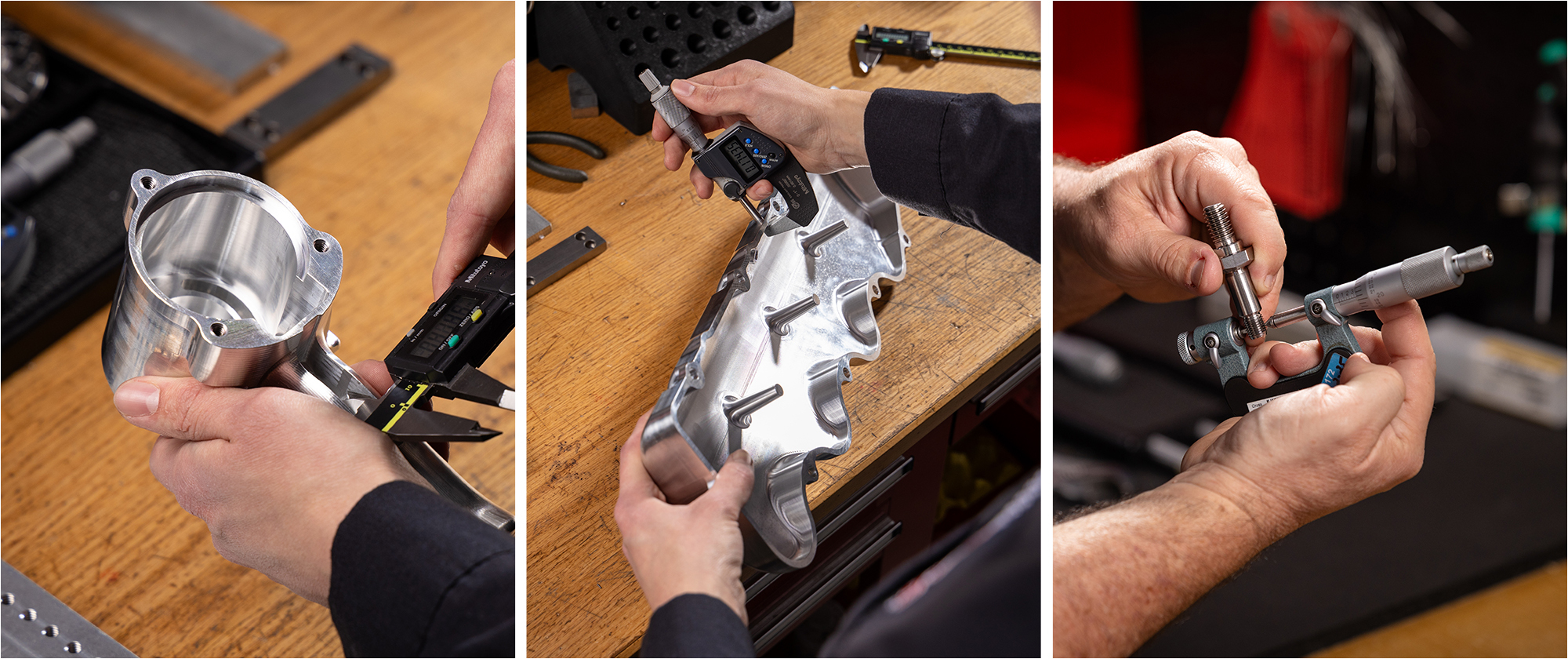
Each day, Okuma makes hard work easier, turns challenges into breakthroughs, and keeps RCR’s production environment — which often has 40-50 projects running at a time — efficient. RCR is supported by Okuma from all angles (during every cut, every new contract, and every big idea). Still, there are five main reasons why Okuma has been the brand of choice, the partner of record, the engine behind every manufacturing effort for almost 25 years:
Repeatability
Producing parts for aerospace, military, and defense industries means RCR must meet strict regulatory requirements during each run with much tighter tolerances than automotive and racing projects typically require. The consistent machining precision of each Okuma machine on RCR’s floor ensures parts meet required specifications. Okuma machines’ repeatability even helped RCR obtain its AS9100 certification, a standard that “sets quality management system requirements with the challenges of the aerospace industry in mind.”3 This certification puts RCR in a small, advanced pool of shops that can handle extremely difficult orders.
“We trust any Okuma machine tool for any cut,” says Rocky Helms, vice president of manufacturing and business development at RCR. David Crandell, a manufacturing engineer closing in on 20 years at the company, adds, “Okuma set us up for success in aerospace because of the repeatability. We can hit the start button, and the next part will be right where the previous one was.”
Complexities, Handled
The last few months at RCR have been defined by complex, difficult, niche parts and tight timelines. Some parts have a cycle time of eight hours, while others need an entire day to complete. “No basic parts come in the door here,” says machinist Austin Osborne.
Of the 18 machines on the floor, RCR prefers its two 5-axis machining centers and one 9-axis multitasking machine for the parts that demand additional intricacy, geometrical dimensioning, and tolerances within half a thousandth of an inch. Between 50% and 60% of new contracts they see have already been “no-quoted” or turned down by other shops that don’t have the capabilities to fulfill them. With Okuma machines — their accuracy, precision, and rigidity — RCR can.
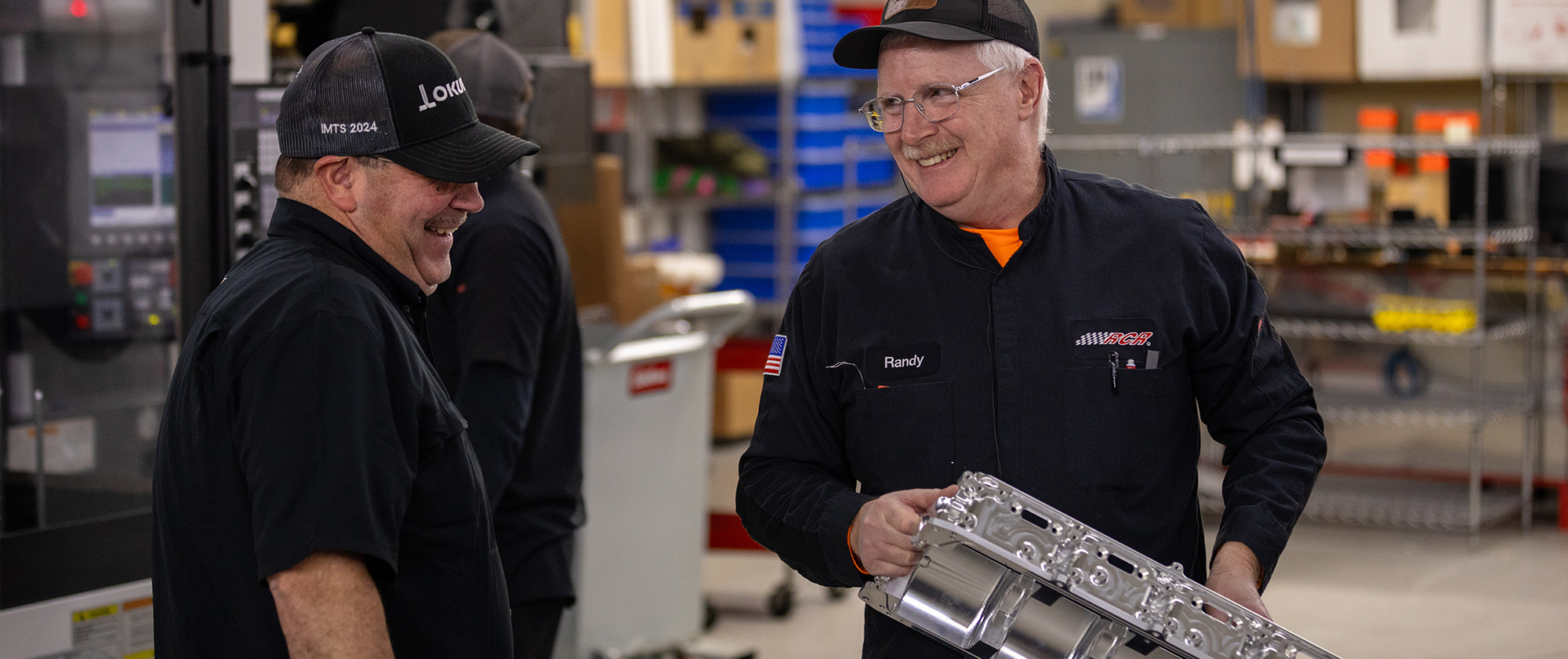
Machine Longevity
RCR’s shop is a testament to how Okuma machines stand the test of time and how one investment can yield positive returns.
“One of the great things about Okuma machines is obviously the longevity,” Helms says. “We have an MX-55, a 25-year-old machine, and it still makes extremely high-quality and precision parts on a daily basis.” So does the MA-50 horizontal with 24 years of milling experience, which “cuts as well as our new horizontals.”
This is echoed by Crandell, who says, “There are still Okuma machines that have been in here since I’ve been here. They still run, they still hold tight tolerances, we don’t have to move parts off of them.” RCR didn’t have to purchase new machines to expand its operations into different industries, not even the machine tools that have been there decades longer than many employees.
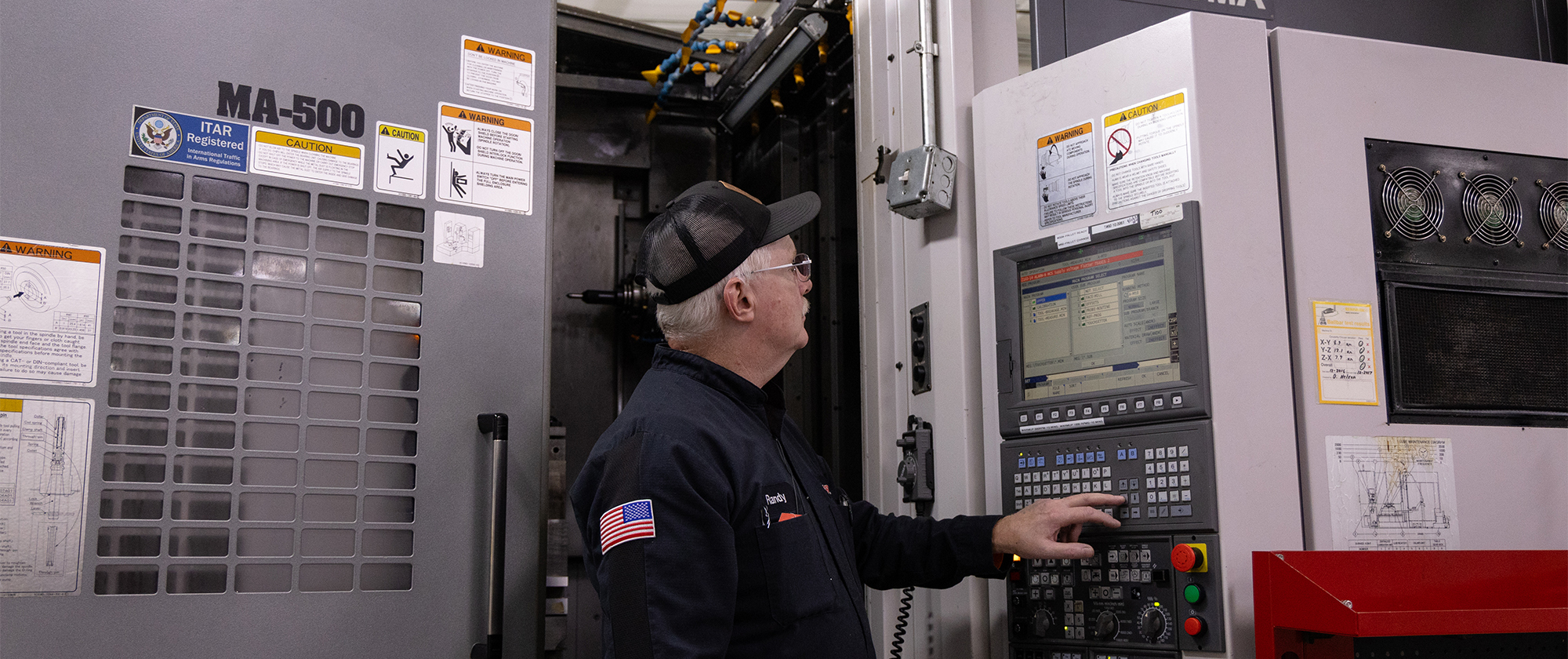
Service and Distribution
RCR doesn’t take more contracts or work than it can handle, but each machine operates around the clock and is scheduled for projects two weeks out. If one goes down, productivity suffers, and timelines might risk being missed. “If something happens, Okuma partners are up here fixing it pretty rapidly,” Crandell says with certainty. “Having a local distributor is huge.”
Like all Okuma customers, RCR benefits from its relationship with its distributor — Morris South. No matter the service needs (preventive maintenance, troubleshooting, machine alarms), a quick solution is only a phone call away. More than once, Morris South distributors have made it to RCR headquarters within an hour to resolve challenges.
In Helms’ opinion, service like this is the most important part of any machine tool purchasing decision. “Almost all of our problems are self-induced, but downtime really hurts us. It’s nice to know that all we have to do is make a phone call, and it’s taken care of.”
Continuity in Control
Each Okuma machine has an OSP-P CNC control. However, just like the manufacturing industry and just like RCR’s business, this control has evolved over time to meet changing demands and requirements. While RCR’s next Okuma machine might have the new Okuma OSP-P500, the organization currently operates with previous iterations, the OSP-P300 and OSP-P200.
Because of how the control is built, versioning won’t create challenges during employee onboarding, training, or when engineers transition from lathes to machining centers with the OSP-P500. In other words, the ease of use and standardization of the control (same programs and alerts, similar keyboard strokes, etc.) keep RCR a step ahead now, and in the future.
Helms puts it perfectly: “We want to keep Okuma machines across the board because of the simplicity involved with training new employees and having each employee familiar with every machine. It’s easy to go from a 3-axis to a 5-axis.” And Osborne, who’s in his first year with RCR, agrees. “Transferring from one machine to another is straightforward.”
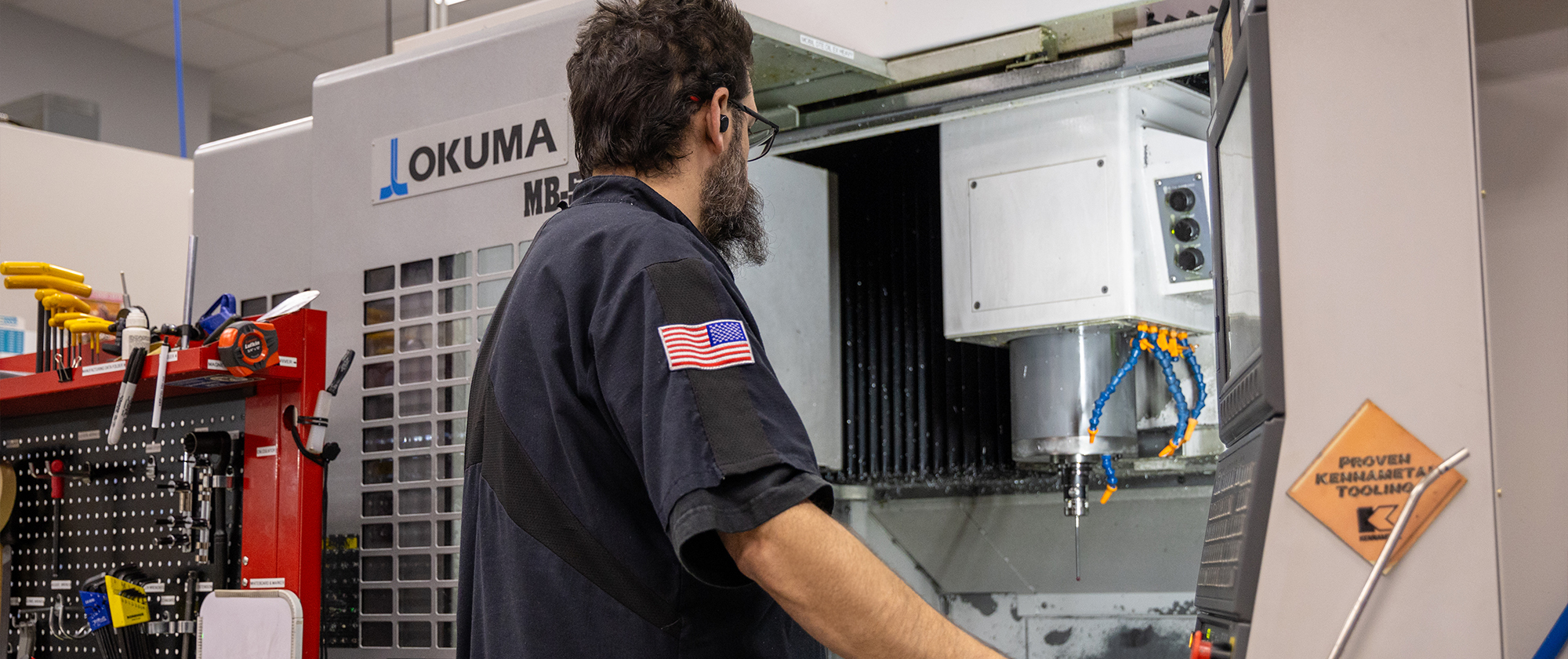
CONCLUSION
RCR is a contract manufacturing shop that can pivot, flex diverse capabilities to win business, and respond to demanding deadlines because its Okuma machines, service, control, and partnership opened possibilities — and delivered excellence — during a time of transformation. RCR keeps winning and evolving as manufacturing does because every Okuma machine tool is capable of anything the business needs, now and in the future.
That’s something RCR thinks about often. A dream future includes expansion into the medical industry and new machines — a double column, to be exact — so they can accept even more (and bigger) projects.
When RCR is ready to turn what’s next into right now, Okuma will wave the green flag.
References
RCR Racing. “Richard Childress.” Accessed 27 January 2025. https://www.rcrracing.com/richard-childress/.
Beckman, Lori. “Reinventing the Wheel with Robot-Automated CNC Multitasking.” Production Machining. 2 February 2023. https://www.productionmachining.com/articles/reinventing-the-wheel-with-robot-automated-cnc-multitasking-.
Aerospace Management: AS9100/AS9100D. NQA Global Certification Body. Accessed 29 January 2025. https://www.nqa.com/en-us/certification/standards/as9100.
We offer a variety of ways for you to stay informed about our events, and to receive general Okuma updates. Fill out the form below to let us know the type of information you'd like to receive.

